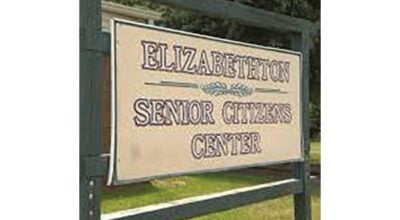Dance teacher performs at international performance festival
Published 8:15 am Monday, June 3, 2019
In an era where communication occurs through dozens of different mediums, physical or digital, the “old-fashioned” arts like music and dancing are still alive and well, providing a gateway through which society can examine itself and get to the heart of issues that affect the entirety of itself.
Dance teacher Annalee Tull recently returned from an international performance festival in New York, showcasing her love of the art of dancing to performers around the world.
She said she received the invitation out of around 130 applicants.
“It spans five days across all boroughs of New York City,” Tull said. “My portion of it was in Brooklyn, in this museum called the Smackmellon Institute.”
A dance teacher at Watt’s Dance Studio in Elizabethton, Tull said she joined dancers from all over the world, either in-person or recorded, to give their take on art, including people from Canada, Cuba and even Ukraine.
“It was really exciting to be part of such a wide, diverse population of people coming together just to support performance art,” she said.
Her contribution, she said, was a blend of spoken word and tap dance.
“It started out evaluating the difference in noise and silence, and who can make noise, and how we use noise to actually get our message across,” she said.
This performance had a focus on oppressed populations, she said, as the piece began with more spoken word and a vocal performance, which then later transitioned into more movement-based communication, with contemporary tap dancing.
For a performance as significant as it was, she said she developed all of it in about a week.
“It was a very quick turn-around,” Tull said. “I work at my family’s dance studio, and we were in the middle of working on recitals and everything, so I was having a hard time finding time to work on the piece specifically.”
However, this seemingly negative time constraint actually turned into its own positive.
“One thing I love about being able to work [there] is, I teach a contemporary dance class, and I always encourage the students to be civic-minded,” Tull said. “So, I brought up this topic to them and told them I had been accepted. I asked them to give me feedback on what they thought silence meant and what they thought noise meant. I used some of their words […] to try to make it collaborative.”
She said this focus on her students was important not just for her special performance, but her duty as a teacher as a whole.
“I think it is important to teach young people that even if you don’t make a living as a performance artist, there is always a way to be involved in the arts world,” she said.
Tull said she was unable to attend for the full, week-long festival, but she was there for the 48 hours in which she had to perform.
Those 48 hours, however, showcased the power of art in the way it can bring light to political and social issues in ways people can relate with.
“No matter where you are, you can think of social justice through art,” she said. “You can still make a difference through art.”
She said these experiences convinced her to prepare to attend next year’s festival as well.
“It was very rewarding,” Tull said. “A lot of people were interested in what my main medium was.”
She said the positive response reassured her of the value of her art and the work she puts into it.
“At 25, we can still be kids dreaming of dancers,” she said.






